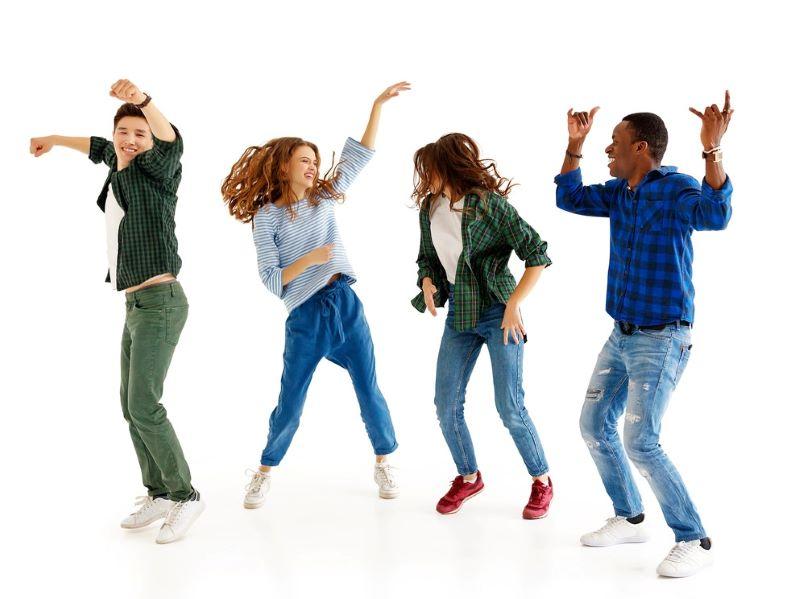
Touch is a simple and effective way to manage learners’ cognitive load

With each new semester, university students face new challenges, including long periods of self-paced study of complex, unfamiliar topics. Often, multimedia and textbook learning resources place a substantial cognitive load on students. Some of this burden – intrinsic load – comes from the fundamental complexity of what students have to learn, given what they already know. Often, however, learning materials or activities that are distracting or confusing result in extraneous load, meaning students have less cognitive capacity to learn new knowledge or skills.
Beginning in the 1980s, cognitive load theory has used our knowledge of the human mind to manage students’ intrinsic and extraneous load more effectively. Much of this research programme has focused on effective design of visual media (eg, text and diagrams), with some studies on audio-based lessons. But, as an educational psychologist, I was curious about how other senses help students learn. Specifically, can we help students learn more by encouraging touch?
- Collection: using movement and outdoor spaces to enhance learning
- Improving learning through physical action and sensory perception
- Autonomy, fun and other benefits of student-centred learning design
Over the past decade, cognitive load researchers have developed a range of ways to manage cognitive load, and increase motivation and learning, through explicit instructions to learn through touch. Here I outline the results of my research using pointing and tracing with adult learners.
Two categories of knowledge
First, it’s useful to understand that there are two very different categories of knowledge. In schools as well as in higher education, we are generally helping our students learn about subject areas that are historically recent, at least in evolutionary terms. Mastery of subjects involving complex symbol systems – such as mathematics, science and history – typically requires long periods of conscious effort, usually with help from subject matter experts (through live instruction, as well as in book form).
In contrast, we are genetically predisposed to learn many bodies of knowledge, often just through imitation of others, with little to no conscious effort. Learning to speak a language is an example; for most people, this is much easier than learning to read or write.
Cognitive load theory has historically focused on managing cognitive burden while learning those new and multifaceted subjects in the first category. Recently, the theory’s “evolutionary turn” has led us to explore how our evolutionary predisposition to touch can support learning while managing cognitive load.
Ways university educators can use pointing and tracing actions on objects
Actions on objects with the index finger are distinct from gestures. Pointing – usually with the index finger – plays a vital role in communication from an early age, and can support learning, but it typically doesn’t involve touch. Across a range of studies, we have found actively touching lesson materials with one or both index fingers results in better learning. Drawing on cognitive load theory, we have argued these benefits come from:
- helping students “chunk” several elements of information into an integrated understanding of the topic
- helping students direct their attention more effectively to core parts of the lesson materials
- increasing students’ interest in and enjoyment of the lesson.
In our first study of combined pointing and tracing, we asked adult students to read through a 10-page lesson on the human heart. Half the students received the following orienting instructions:
‘‘Please use your hands where you need to make a link between text and an associated part of the diagram. Some ways you might like to do this are:
- point at the word in the text, then point at the corresponding location on the diagram
- leave your finger on the diagram as you read about the corresponding element in the text
- use more than one finger to simultaneously point to parts of text and the diagram that are related
- where you see arrows indicating blood flow of the heart, use your hands to trace along the arrows.’’
Compared with the no-touch condition (asked to sit on their hands), students who pointed and traced learned more terminology from the lesson and answered more comprehension questions correctly. In a replication of this study with a more realistic control condition (hands placed next to the lesson materials), students who traced and pointed once again solved more terminology and comprehension questions.
Most recently, we investigated whether adult learners would benefit from pointing and tracing while studying a computer-based lesson on star formation. Compared with control-group students who were asked to study with their hands on their laps, students who pointed and traced reported higher levels of interest in and enjoyment of the lesson, reported lower extraneous load, and solved more retention and transfer test questions.
Close to a century ago, John Dewey argued that “consciousness is essentially motor or impulsive”. “Neglect of this principle,” he said, “is the cause of a large part of the waste of time and strength in school work. The child is thrown into a passive, receptive, or absorbing attitude…the result is friction and waste.”
University students, too, can struggle to engage because many (if not most) lessons neglect the body’s potential to support learning. As learning strategies, tracing and pointing are cost-free and simple and can be easily implemented in university subjects, across a range of lesson topics and media using general “pre-lesson” instructions similar to the ones we used in our studies.
Paul Ginns is associate professor of educational psychology in the School of Education and Social Work at the University of Sydney, Australia.
If you would like advice and insight from academics and university staff delivered direct to your inbox each week, sign up for the Campus newsletter.
Additional Links
Ginns, P., & King, V. (2021). Pointing and tracing enhance computer-based learning. Educational Technology Research & Development, 69(3), 1387-1403. DOI: 10.1007/s11423-021-09997-0
Macken, L., & Ginns, P. (2014). Pointing and tracing gestures may enhance anatomy and physiology learning. Medical Teacher, 36(7), 569-601. DOI: 10.3109/0142159X.2014.899684


